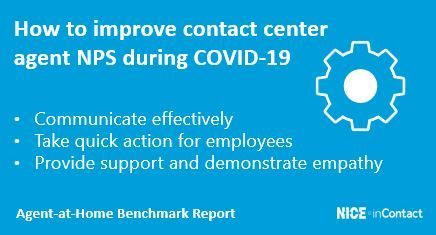
Business as usual
While agents’ physical locations may differ, the job at hand remains the same - your customers are still relying on them for the same high-quality support they’ve come to expect. So, while it might sound easier said than done, agents should strive to operate the same as when they are in the office and aim to deliver the same level of service despite the circumstances. That means agents should be able to leverage the same technology, follow the same processes, and deliver the same level of customer support. Technology. If your agents were able to relocate to work from home quickly, odds are that your contact center is using cloud contact center software. And at that, it’s probably the same technology that your agents are accustomed to using every day in the office. So, the continuity of your technology from office to home will promote feelings of normalcy. Same agent interface, same system, just different scenery.Focus on Business Priorities. The content and frequency of communication leaders have with work-from-home agents also play a role in helping convey the message of business as usual. Leaders should try to ensure that their communications with agents don’t dwell on the outliers of today’s circumstances – pandemic news, quarantine, etc. – but rather focus on typical business priorities and outcomes.Just as in a brick-and-mortar setting, teams need a clear understanding of business priorities. Maintaining consistency in processes and policies is important, and regardless of physical location, agents are expected to meet certain performance standards and KPIs. Albeit, some may need to be relaxed given the circumstances (we’ll get to that in the “business unusual” section). Continue to track and communicate agent progress against goals for KPIs. Ideally your contact center software provides dashboards that arm agents with real-time insights from home, but if not, ensure agents are getting updates via email or virtual meetings periodically throughout the workday to keep them engaged. Also, to help diminish any feelings of isolation that may set in, communicate everyday successes and wins, much like you would in the office.






